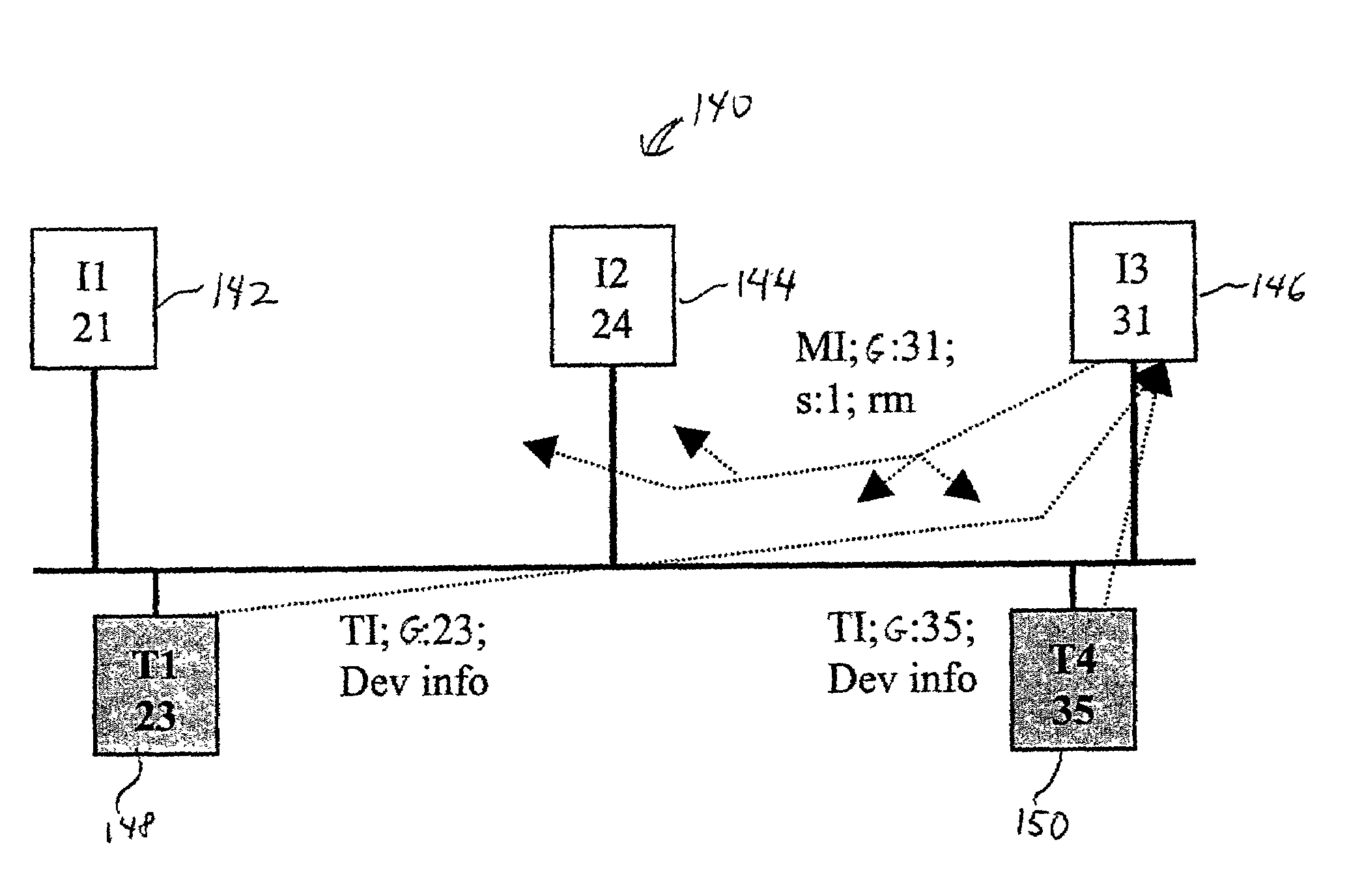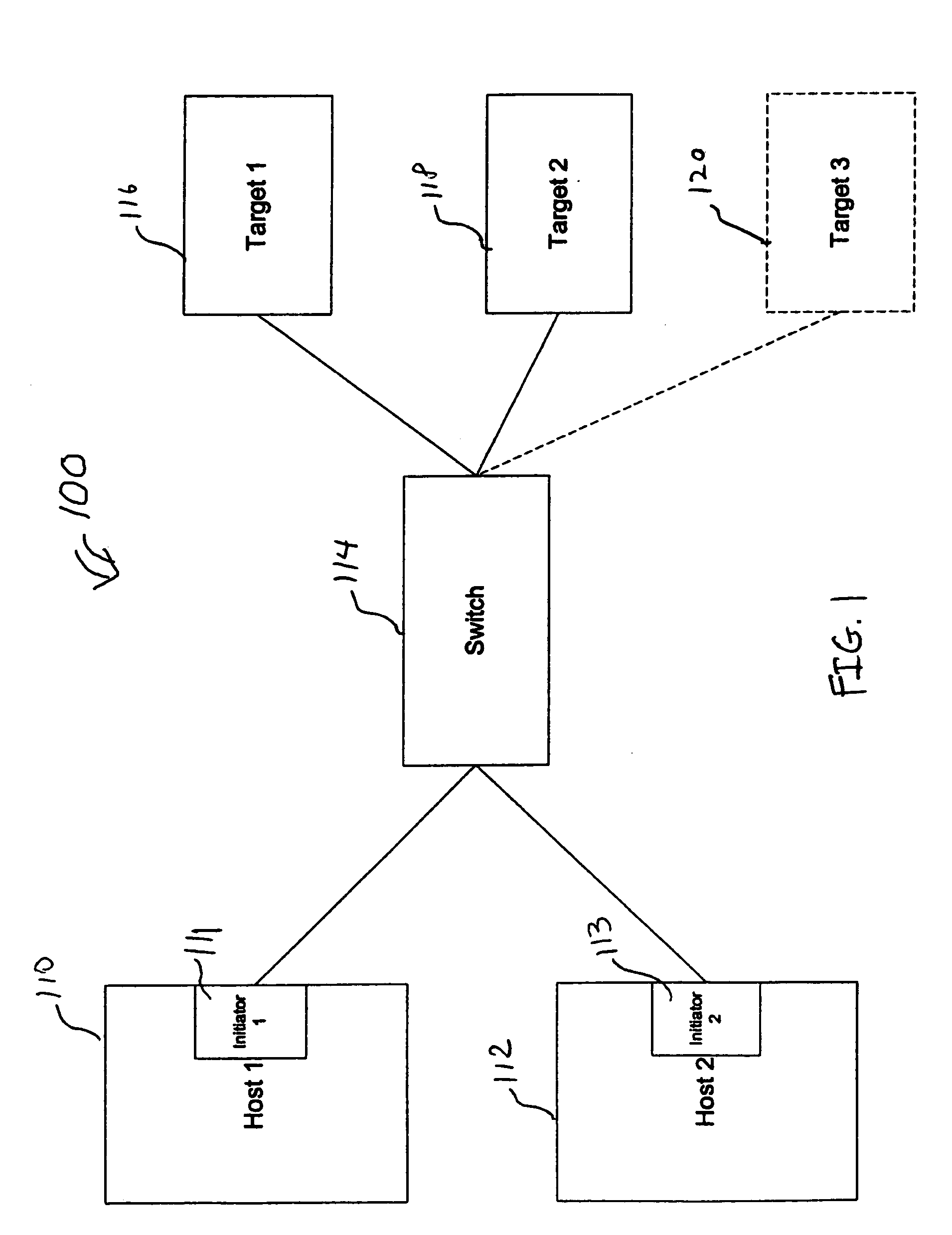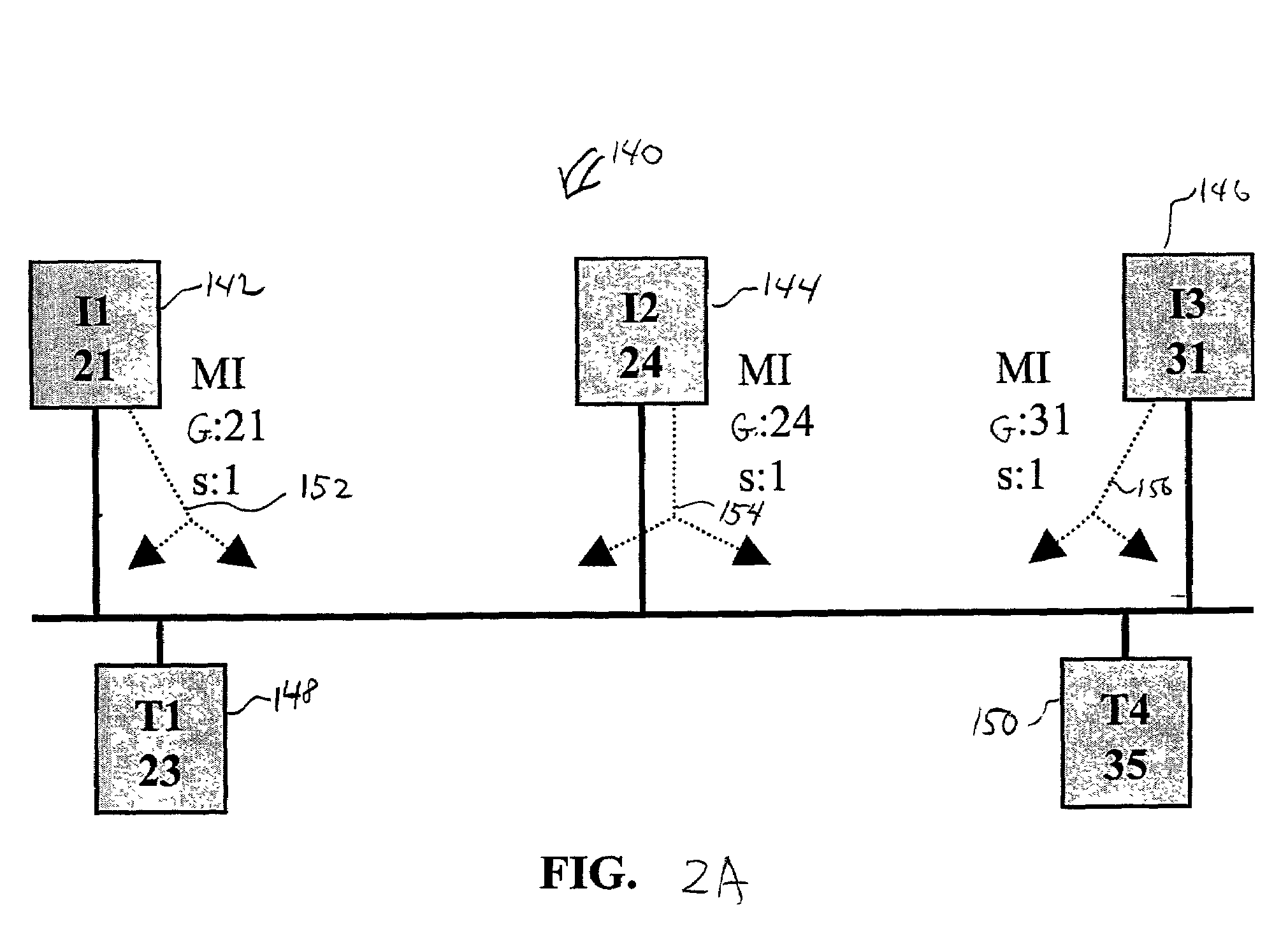Device discovery methods and systems implementing the same
a device discovery and device technology, applied in the field of data communication, can solve the problems of high data transmission overhead, data transfer congestion, data communication congestion, etc., and achieve the effect of streamlining the processing and communication of device data, reducing data communication congestion, and slowing down device discovery
- Summary
- Abstract
- Description
- Claims
- Application Information
AI Technical Summary
Benefits of technology
Problems solved by technology
Method used
Image
Examples
Embodiment Construction
[0038]An invention is described for a system for centralized network communication control and efficient but quick peripheral device discovery in a network environment. The peripheral device discovery system may also be known as peripheral discovery protocol (PDP). It should be understood that the method of the present invention may work in any type of network environment utilizing any type of data transfer protocol where data is transferred and where data congestion over a network is preferably lowered and target discovery time is reduced. Examples of such networks include, for example, Ethernet, token ring, or other networks with multicast capabilities. Examples of such data transmission protocols include, for example, TCP / IP, small transport protocol (STP) as described in U.S. patent application Ser. No. 09 / 490,630, entitled “Methods For Implementing An Ethernet Storage Protocol In Computer Networks,” etc. The aforementioned patent application is incorporated herein by reference....
PUM
 Login to View More
Login to View More Abstract
Description
Claims
Application Information
 Login to View More
Login to View More - R&D
- Intellectual Property
- Life Sciences
- Materials
- Tech Scout
- Unparalleled Data Quality
- Higher Quality Content
- 60% Fewer Hallucinations
Browse by: Latest US Patents, China's latest patents, Technical Efficacy Thesaurus, Application Domain, Technology Topic, Popular Technical Reports.
© 2025 PatSnap. All rights reserved.Legal|Privacy policy|Modern Slavery Act Transparency Statement|Sitemap|About US| Contact US: help@patsnap.com



